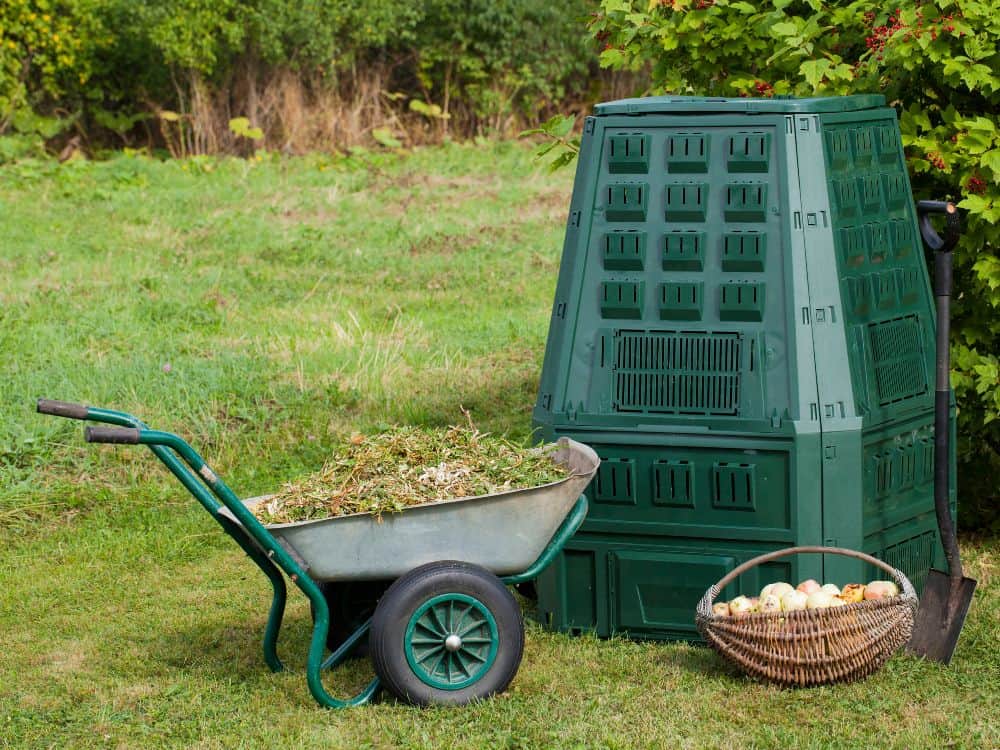
What is Compostable? 103 Things You Can Compost Right At Home
Welcome to the composting club!
We can’t help but talk about the benefits of composting. In fact, composting has been one of the most life-changing sustainability practices we’ve adopted.
Maybe you’re experimenting with apartment composting or have a compost bin on the patio. You might be going old school with a simple compost pile in the backyard.
Whatever your composting method is, you’re on your way to making one of the biggest positive impacts on the environment (read: reduce an extremely potent greenhouse gas).
High five to that!
Let’s just make sure we know what’s compostable, of course.
What Is Considered Compostable?
We hear a lot about brands offering compostable packaging and products these days, but exactly what is meant by “compostable material”?
So let’s first define “compostable”: Anything that can completely break down into natural elements without leaving toxic residue in a relatively short period of time (a huge distinction when talking about things that are biodegradable vs compostable).
For example, a garment made of 100% organic cotton would be considered compostable because it will break down back into carbon and humus (the finished product of the process we call compost).
Whereas something made of synthetic fabrics would merely break apart into smaller microplastics (leaving toxic residue behind) over the course of many years.
Clear as compost?
If you said no, that’s okay. Because it can still be tricky to accurately apply that concept to actual waste, we’ve prepared a list of compostable items to help you become a composting connoisseur.
Compostable waste (not to be confused with biodegradable materials) falls into one of two categories. Both are necessary for a successful compost pile and perform best when alternated in thin layers.
- Green: Nitrogen-rich materials like grass clippings, spent coffee grounds, and fruit and vegetable scraps. These wet materials help maintain moisture and rot down quickly.
- Brown: Carbon-rich materials like paper, cardboard, prunings, dead plant matter, and other yard scraps. These provide aeration and structure but because they break down slowly, it’s best to chop/tear them into small pieces.
We’ve broken down (pun intended) this list into sections based on where you might find the compostable materials in your home. We’ve also split them into brown and green organic matter, so you know you’re getting the right balance for your composting process.
It’s worth noting that a lot of zero waste products are also compostable or packaged in compostable materials—but they may not be suitable for composting at home.
While this list is designed for those wanting to compost at home (indoor compost bins included), industrial compost facilities can compost a lot more (e.g. dairy and meat and bones).
More and more councils/municipalities are starting to offer food/composting collection services so check out what’s available in your neighborhood for things not included on this list.
Additionally, the general examples listed above don’t necessarily apply to ALL types of that item. For example, you shouldn’t toss any old piece of cardboard in your bin.
What kind of cardboard is compostable?
Think about our definition above and if it will leave anything unwanted behind. Certain inks and laminated (AKA plastic) can coatings render cardboard (among many other items) no longer compostable.
Now let’s get rot down to it (or watch our video explainer below for the highlights).
1. What Is Compostable In The Kitchen?
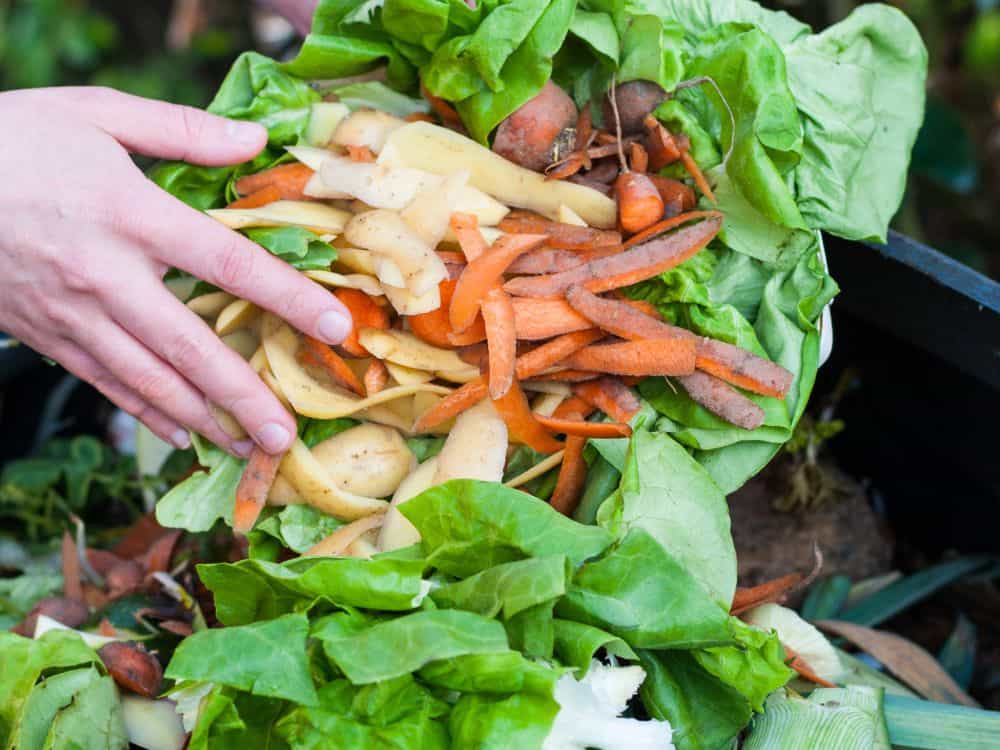
Between filling it with eco-friendly cookware and repurposing your vegetable scraps, the kitchen is THE place to support our planet.
But even though it’s all technically organic, not all food should go in your home compost. So what is compostable food waste?
Most food waste and food scraps can undergo the composting process. As a general rule of thumb (provided by the University of Georgia), “If it can be eaten or grown in a field or garden, it can be composted.”
Composting cooked food, meat, fish, and dairy
Grease, most animal products, and food packaging should be left out of the compost bin.
Composting cooked food also should generally be avoided unless you have a set-up specifically designed to handle it.
Adding cooked food to a traditional compost pile or bin risks several problems:
- It attracts pests. Mice, rats, flies, foxes, (bears?!) will be attracted to cooked food.
- It can negatively affect the composting process. Cooked food is wet and soggy affecting the moisture levels and aeration of your compost environment.
- It smells bad!
Small amounts of cooked vegetables (cooked without oil) may be okay in a well-balanced compost set-up that reaches high enough temperatures. To play it safe, it’s a good idea to invest in a specialized bin for cooked food and animal products.
The Green Johanna is a type of hot composting bin that can deal with all of your cooked and raw food scraps, meat, fish, and dairy, included.
A bokashi bin ferments food waste in a sealed anaerobic environment using a special inoculated bran to expedite the composting process. You can go ahead and compost everything in this one including bones.
Just be aware that while the bokashi process makes the bones safe to add to your garden soil, they won’t be broken down (and you’ll find yourself digging up bones months/years later!).
Not technically a composter, but rather a “food waste digester”, a Green Cone is a solar-powered solution to dealing with cooked food and animal products. It doesn’t produce compost, but the underground basket releases nutrients into the soil and nourishes nearby plants.
Let’s assume though that you have a standard indoor bin or outdoor compost pile in your backyard. In this case, the following kitchen materials and food is compostable at home.
Kitchen Composting Green Materials
1. Fruit and vegetable scraps: Think potato skins (though these can also be eaten!), leftovers from juicing, broccoli stalks, apple cores, soggy lettuce, seaweed, and moldy peppers, to name a few.
2. Corn husks and chopped-up cobs
3. Non-acidic fruit peels: Banana peels, avocado skins, and melon rinds are okay, but avoid too many grapefruit, orange, lime, and lemon peels. Citrus fruits can make your compost overly acidic and can kill your worms.
4. Fruit pits: Soak in boiling water and blend to speed up the decomposition process
5. Fruit seeds: Chopped up to prevent sprouting in your compost, unless you want that 🙂
6. Spoiled plant milk: Sustainable milk alternatives like almond, soy, oat, and coconut—but NOT dairy milk, which will produce a rotten stench and attract pests.
7. Moldy cheese: Only in very small amounts and buried in your pile
8. Beans and other legumes
9. Herbs and spices
10. Tea leaves and natural paper tea bags: Be careful though, as most have plastic in them—best to choose loose-leaf tea from zero waste tea companies.
11. Coffee grounds
12. Liquid filling from canned fruits and vegetables
13. Expired jams and other preserved food
14. Symbiotic culture of bacteria and yeast (SCOBY): If you accidentally kill your SCOBY or just breed too many while brewing and flavoring kombucha at home, toss that gelatinous blog in the compost.
15. Soured organic beer, liquor, and wine. Even soil has a palette!
16. Old condiments: Things like moldy pasta sauce, ketchup, relish, soy sauce, mustard, and the like are okay, but only in small amounts as they can be acidic.
17. Tofu
Kitchen Composting Brown Materials
19. Stale bread, tortilla shells, and leftover pizza crust: Buried in the pile so they don’t attract pests
19. Stale cereal, oatmeal, and granola bars
20. Stale crackers, cookies, pretzels, and chips
21. Dry rice and pasta: Cooked rice and pasta are also compostable, but try not to overdo it as the excess moisture may make odor management tricky. Cooked rice also breeds bad bacteria.
22. Crumbs
23. Grape and other fruit stems
24. Nutshells: Be warned: these will take longer than the other items here to break down. Leave out walnut shells, as they contain juglone, which is toxic to some plants.
25. Popcorn: Leftover, unpopped, or burnt
26. Eggshells: Rinsed (to deter pests) and crushed to speed up decomposition
27. Cardboard egg cartons
28. Unbleached coffee filters
29. Real wine corks: Chopped into relatively small bits
30. Brown paper shopping bags
31. Paper lunch sacks
32. Cardboard food boxes
33. Used paper napkins and paper towels (paper towels are not recyclable just FYI).
34. Non-grease-soaked paper towels: Read up on the specifics of composting paper towels, and don’t forget to shred the cardboard center roll.
35. Corrugated cardboard pizza boxes: Only parts that aren’t saturated with grease, though.
36. Parchment paper: Unbleached and unwaxed
37. Cupcake and muffin paper wrappers, without waxy linings
38. Non-coated paper plates: They can have some food stains, but should not be saturated in grease.
39. Paper cups without a waxy or plastic lining: No Dixie Cups, for instance
40. Wooden chopsticks and bamboo skewers
2. What’s Compostable In The Garden?
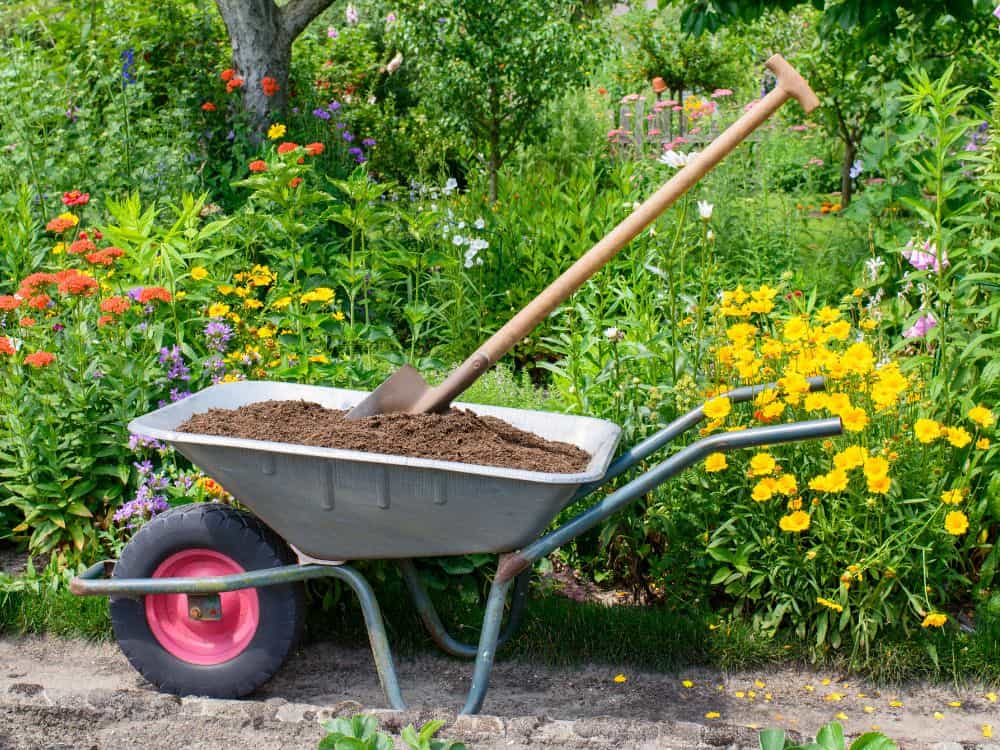
It’s no wonder that yard waste can go back into the yard… via the composting process!
Just be sure to look out for weed seeds, diseased plants, and anything else that can spread through the compost pile.
Also, know that things like woody prunings may take a loooonng time to decompose, especially if not chipped into tiny pieces.
Lawn / Garden Nitrogen Rich Material
41. Green leaves
42. Grass clippings: While an excellent compost ingredient, cut grass can become compact forming a dense air-tight clump, making the breakdown process anaerobic. Make sure to either thoroughly mix in grass trimmings with the rest of your compost material or spread it thinly on top.
43. Sod chunks
44. Deadheaded flowers
45. Weeds: Avoid weed seeds as these could cause a garden disaster
46. Spent bulbs
47. Thinned-out, weaker plants (including indoor plants)
Lawn / Garden Carbon Rich Material
48. Non-coated, paper seed pouches
49. Dead leaves
50. Dead plants (including their roots and soil): Be sure to determine their cause of death, because plant diseases and plant infestations can spread.
51. Bush and shrub trimmings
52. Hay, straw, or alfalfa
53. Sticks and twigs: Break these into small pieces. They will already take a long time and need a large amount of nitrogen (to balance out their high carbon content) to break down.
54. Sawdust and wood chips (from untreated wood only): As with grass, beware of clumping. Be sure to either layer between other materials or lightly sprinkle them on.
55. Pine needles and pine cones
56. Burned wood ashes: A great alkaline substance to balance the pH of your pile if you’ve been adding a lot of acidic items (i.e. pine needles, oak leaves, citrus fruit). These shouldn’t be confused with coal ashes, which are a composting no-no due to toxic chemicals and metals.
57. Peat pots and non-plastic seed trays
58. Coir flower basket liners
59. Leftover or outdated potting soil
60. Fallen bird nests: Please note that abandoned bird nests should be left alone, as they are sometimes reused).
61. Cut-up burlap sacks after use as pot or garden bed liners
3. Things That Are Compostable In The Bathroom
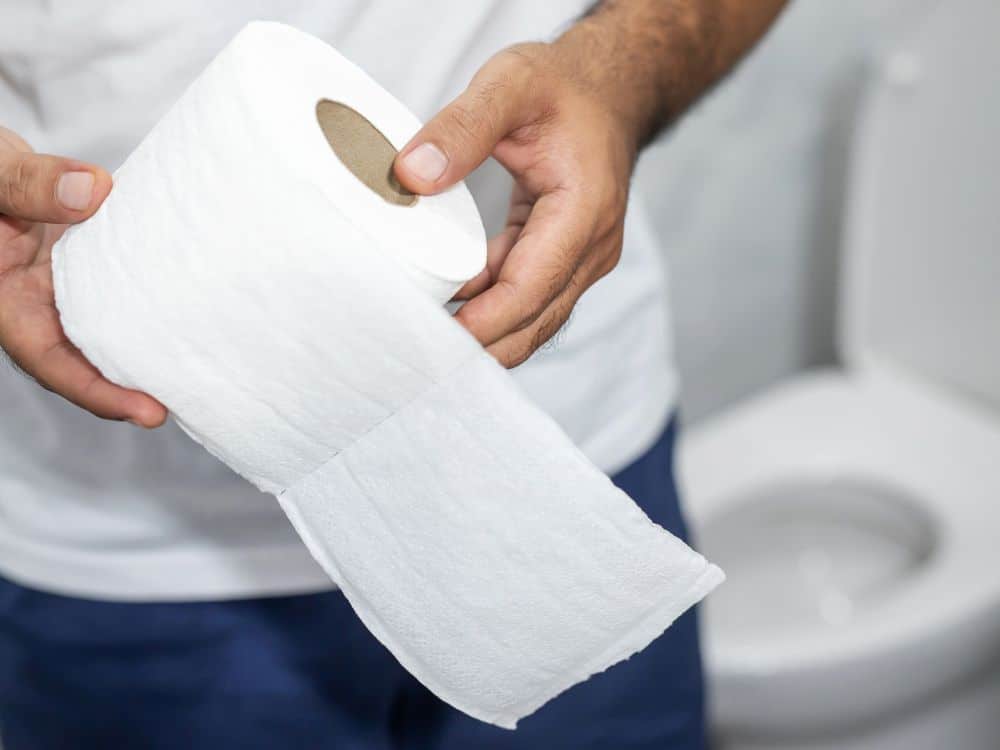
The bathroom is another good source of compostable materials.
You may have even heard that period blood is considered an excellent nitrogen-rich fertilizer.
If the thought of dumping out your zero waste bathroom product (menstrual cup) in the garden gives you the heebie jeebies, you can still source other carbon-rich materials from the loo.
Bathroom Composting Browns
62. Bamboo toothbrushes (remove the bristles) and silk or plant-based dental floss
63. Shredded toilet paper rolls from your eco-friendly toilet paper
64. Cotton balls and cotton swabs with cardboard sticks: If they are 100% cotton wool and not blended with synthetic material. Also, make sure they don’t have any synthetic makeup or skincare products on them.
65. Fingernail clippings
66. Human hair and razor trimmings
67. Cardboard packaging from personal care products
68. Used facial tissues: Avoid the ones you’ve used when you’ve been sick.
69. Cut-up loofahs: We mean real, eco-friendly loofahs, not those pink plastic poofs.
70. Old 100% cotton towels and washcloths
4. What Can Go In Compost From The Office?
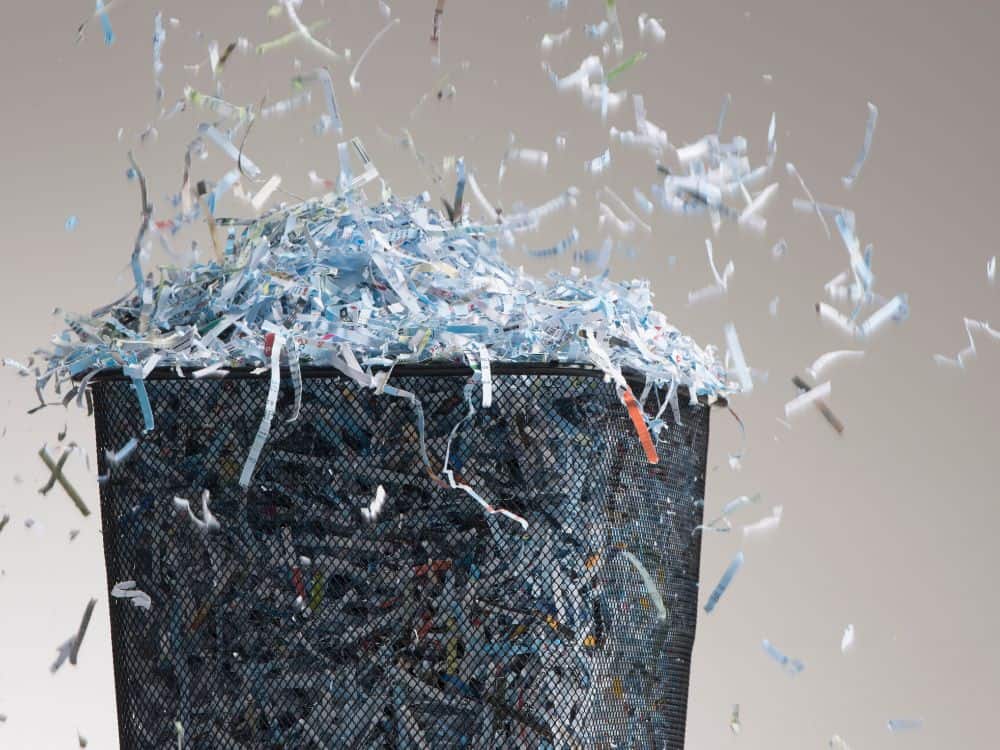
What is a compostable product in the office?
Between plantable pencils and other eco-friendly school supplies, many of our office essentials are now designed to go back to the earth.
Even if not specifically designed for biodegradability, there are a lot of high-carbon items that can go from getting the job done to supporting healthy soil.
Office Composting Brown Materials
71. Newspaper: For all paper-based composting materials, they compost best when shredded or torn into bits.
72. Bills, plain junk mail, and other non-glossy paper documents and cards.
73. Subscription cards from magazines: You may not be able to compost the glossy pages of People Magazine, but don’t forget the standard subscription cards inside. They’re usually included in most widely published magazines.
74. Envelopes (with plastic address window removed)
75. Corrugated and plain cardboard boxes and mailers
76. Sticky notes
77. Pencil shavings
5. What Is Compostable Waste From Pets And Animals?
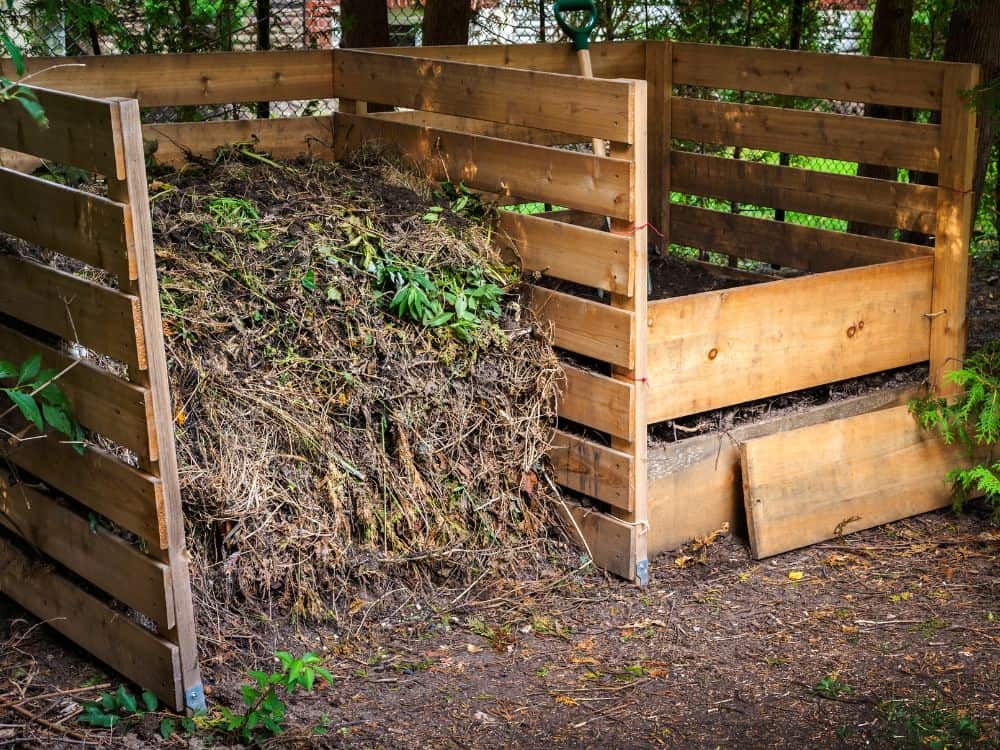
While the composting process, unfortunately, can’t help with an abundance of pet waste from our feline carnivores and waggy omnivores (sorry, Fido), it can turn some pet products and organic waste into soil-supporting compost.
Pet / Animal Composting Green Materials
78. Manure from non-carnivorous animals only (like horses, goats, cows, chickens, and sheep)
79. Some pet waste (bird droppings, manure from rabbits, gerbils, and hamsters)
Pet Composting Brown Materials
80. Dry eco-friendly dog food and eco-friendly cat food
81. Animal fur or feathers
82. Rodent pet bedding (e.g. sawdust): Again, from your herbivorous pets only.
83. Fish or rodent food pellets
84. Newspaper cage liners
85. Chewed-up bamboo dog toys or cotton or hemp eco-friendly dog toys
86. Worn-out hemp or bamboo dog collars and eco-friendly dog beds made from natural fibers, or better yet, organic dog beds
6. Compostable Items From The Holidays
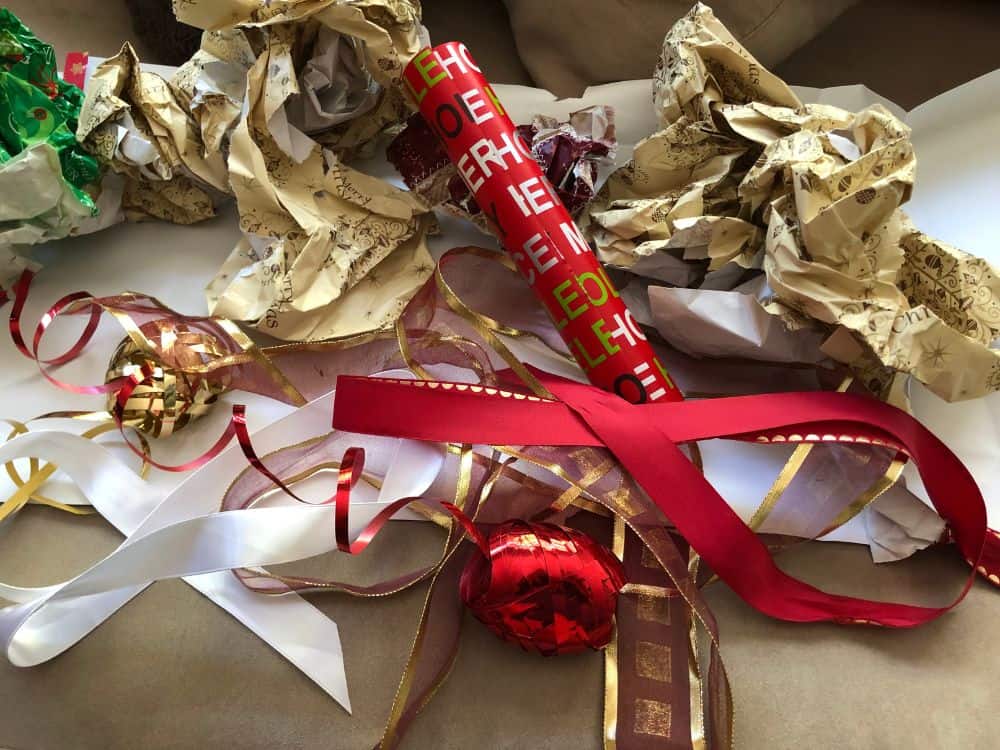
Stocking up on eco-friendly gifts isn’t the only way you can be sustainable around the holidays. What you do during clean-up can be just as green.
From feast-prep food scraps to the shredded paper in gift boxes, a lot of our holiday materials can go in the compost bin.
Holiday Composting Greens
87. Cut floral arrangements
88. Jack O’ Lanterns and decorative gourds: Channel your second favorite 90s Alt Rock band and start smashing those pumpkins before adding them to the compost pile.
Holiday Composting Browns
89. Wrapping paper that isn’t plastic coated: Try to reuse first if you can.
90. Raffia
91. Crepe paper streamers
92. Popcorn strung around the Christmas tree (people still do that, right?)
93. Real Christmas trees: Just make sure you either put it through the wood chipper or have a heyday with the hatchet first, or it will linger in a compost pile for awhile
94. Evergreen wreaths and garlands: Make sure you remove all the wire ties and any other non-compostable metal residue first.
95. Paper table cloths
7. Other Compostable Materials
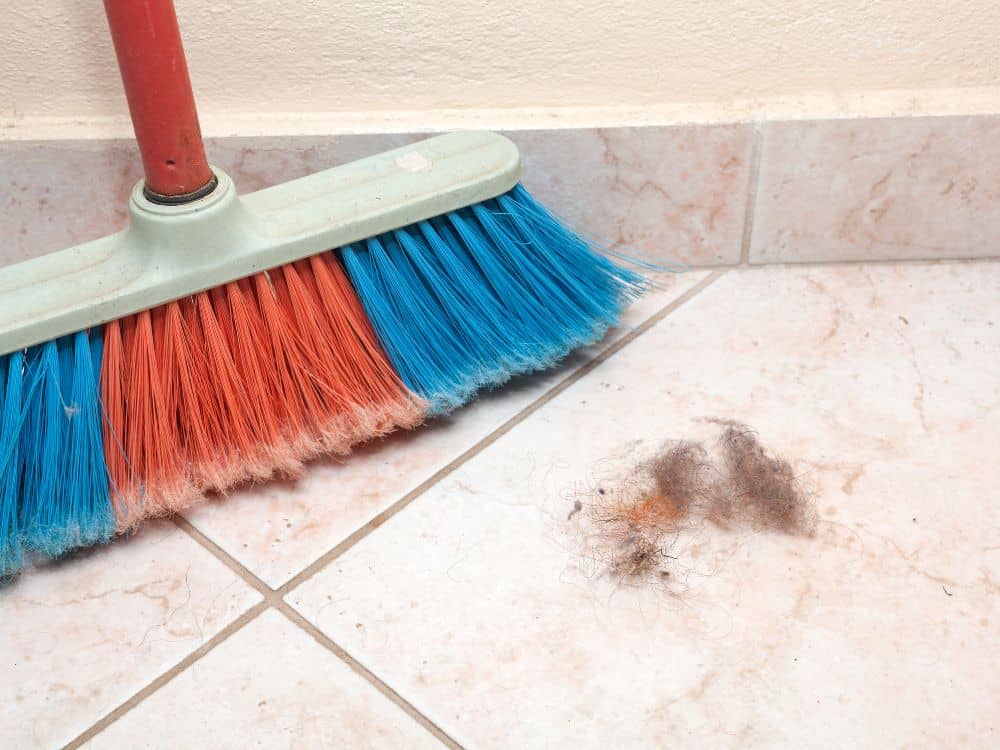
There are a few compostable things that didn’t fit into the above categories.
As an example, you may be asking, “what is compostable packaging?” Made of paper, natural fibers, cardboard, or some bioplastics (like corn-starch), there are some types of packaging and other odds and ends that can go into a backyard composting system.
However, non-paper compostable packaging (AKA compostable plastic), should be clearly labeled as home compostable with an appropriate certification back up that it meats ASTM (or comparable) composting standards.
If you aren’t sure, err on the side of caution and leave it out.
Home Composting Browns
96. Stained or worn out clothes (e.g. if you’ve been wondering what to do with old socks): Clothes are compostable but they must be made from 100% natural fabrics like cotton, linen, wool, hemp fabric, silk, or cashmere. No polyester, nylon, or elastane—even in the smallest blend.
97. Natural potpourri
98. Dirt and dust bunnies: Those picked up by your broom, not vacuum, which also could have picked up synthetic carpet fibers and other non-compostable materials.
99. Spent matches
100. Packaging that very clearly says “certified home compostable” on it (NOT biodegradable). We have tried some of this type of packaging with worm composting, and they don’t seem to mind.
101. Compostable trash bags: Again, clearly labeled as certified home compostable. They must ONLY be filled with other compostable things from this list.
102. Unwaxed, organic string, thread, and twine
103. Non-glossy price tags
Did you know we Have a Newsletter?
We cover the latest in sustainable living, fashion, zero waste, beauty, travel, finance and more…
Why Start Composting?
For those who are new, we’ll remind you that composting is the breaking down and repurposing of organic waste through microbes like bacteria and fungi, as well as worms and insects. Specifically, composting breaks down waste of biological (organic) origin, such as plant matter and food waste.
You may recognize food waste as the third highest emitter of greenhouse gasses (like carbon dioxide) if it were a country. Yet in 2018, only 4.1% of food waste in the US was composted, according to the EPA (down from more than 6% the year before).
This is downright devastating because when organic waste hits the landfill, it breaks down without oxygen (anaerobically) as opposed to composting’s aerobic process. This releases methane, an extremely potent greenhouse gas.
Composting is a necessary means of reducing worldwide organic waste and, when implemented on a wide scale, it reduces factors that contribute to climate change (cough, cough, methane emissions).
The composting process also produces an incredibly useful substance. Many people refer to compost as “black gold,” something with tremendous potential for improving soil health.
Finished compost contains nutrient-rich humus, a soil amendment that can serve as a replacement for synthetic fertilizers. It’s capable of helping soil retain moisture, healing depleted soil, and even hazardous waste remediation.
Even if you don’t have a garden where your usable compost can go, the world as a whole needs it—and desperately so. We humans tend to take from the soil far more than we ever give back.
The Food and Agriculture Organization (FAO) has warned that 90% of our topsoil will be at risk of degradation by 2050. Compost is one of the best solutions we’ve got to combat this and preserve future food supplies.
By giving your compost to someone who can use it, you’re still helping rebalance the nutrient cycle. Even if you don’t have space for a compost bin, having a worm bin indoors can help you transform waste into wealth.
You could also consider commercial composting.
What Is Commercially Compostable?
Some compostable material needs a little support in the decomposition department.
This is where industrial compost facilities come to the rescue. They’ve optimized temperature, moisture, aeration, and microbial activity to break down organic matter on a large scale.
So, what is a compostable product for a commercial composting system?
In addition to large volumes of food waste, coffee grounds, paper, wood chips, sawdust, food industry byproducts, yard waste, and other organic material, commercial composters can handle materials you can’t compost at home:
- Dairy products
- Meat
- Biodegradable Products Institute (BPI) certified industrial compostable bags and products
- Compostable kitchenware (look for ASTM D6400 or EN13432 certification)
Final Thoughts On What Is Compostable
As you can see, there are so many compostable materials that could be broken down and returned to the nutrient cycle to create healthy soil.
It all starts by asking, what is compostable trash?
Hint: it’s a lot more than you might think it is.
In fact, the EPA’s Municipal Solid Waste report revealed that over half of landfill waste was actually compostable.
Composting at home is our chance to make a positive impact on the planet. To give back. To waste not, want not.
While there’s many compostable materials, don’t forget to familiarize yourself with what is not compostable. And if you are buying compost just make sure it’s peat-free compost.
Pin these:
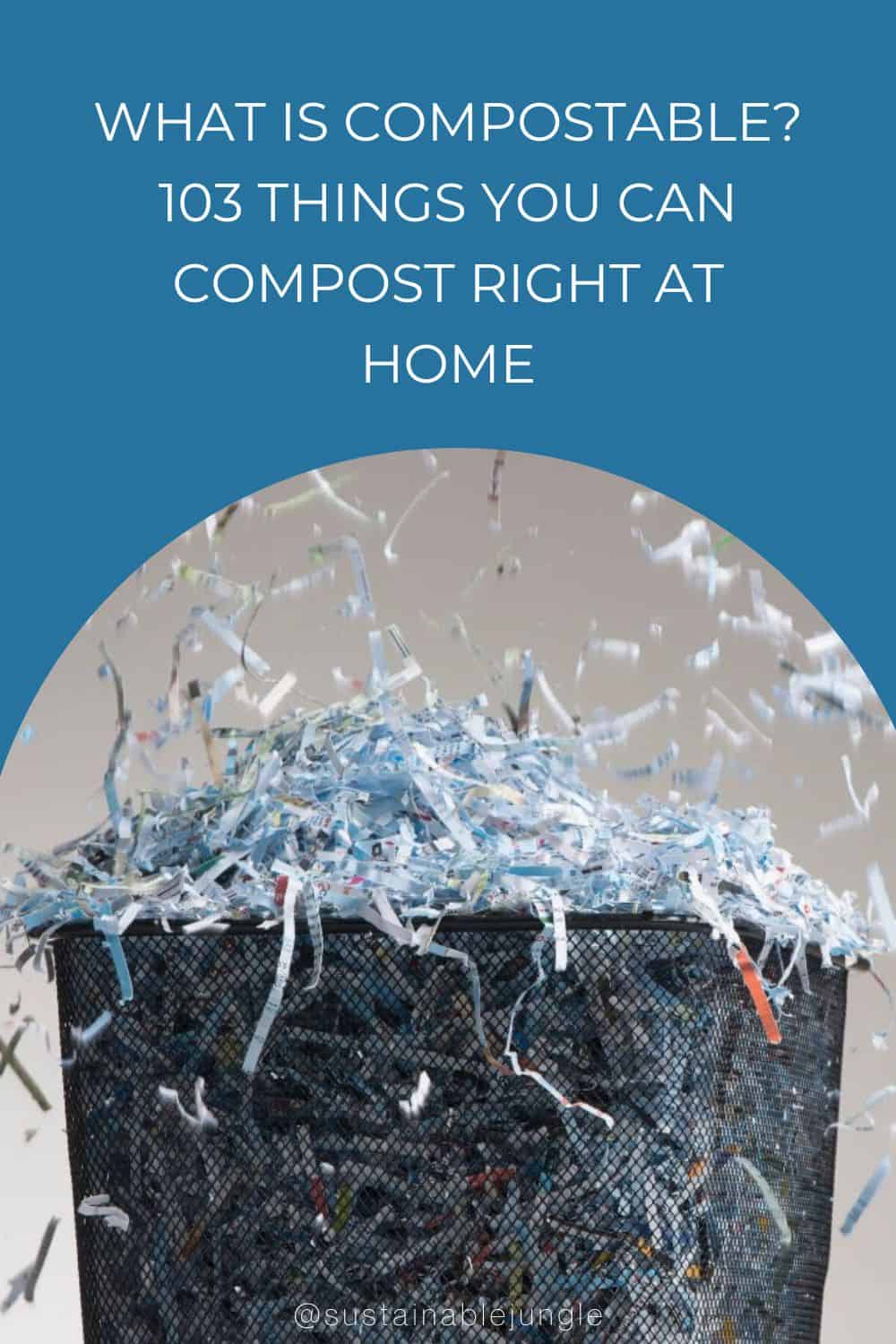
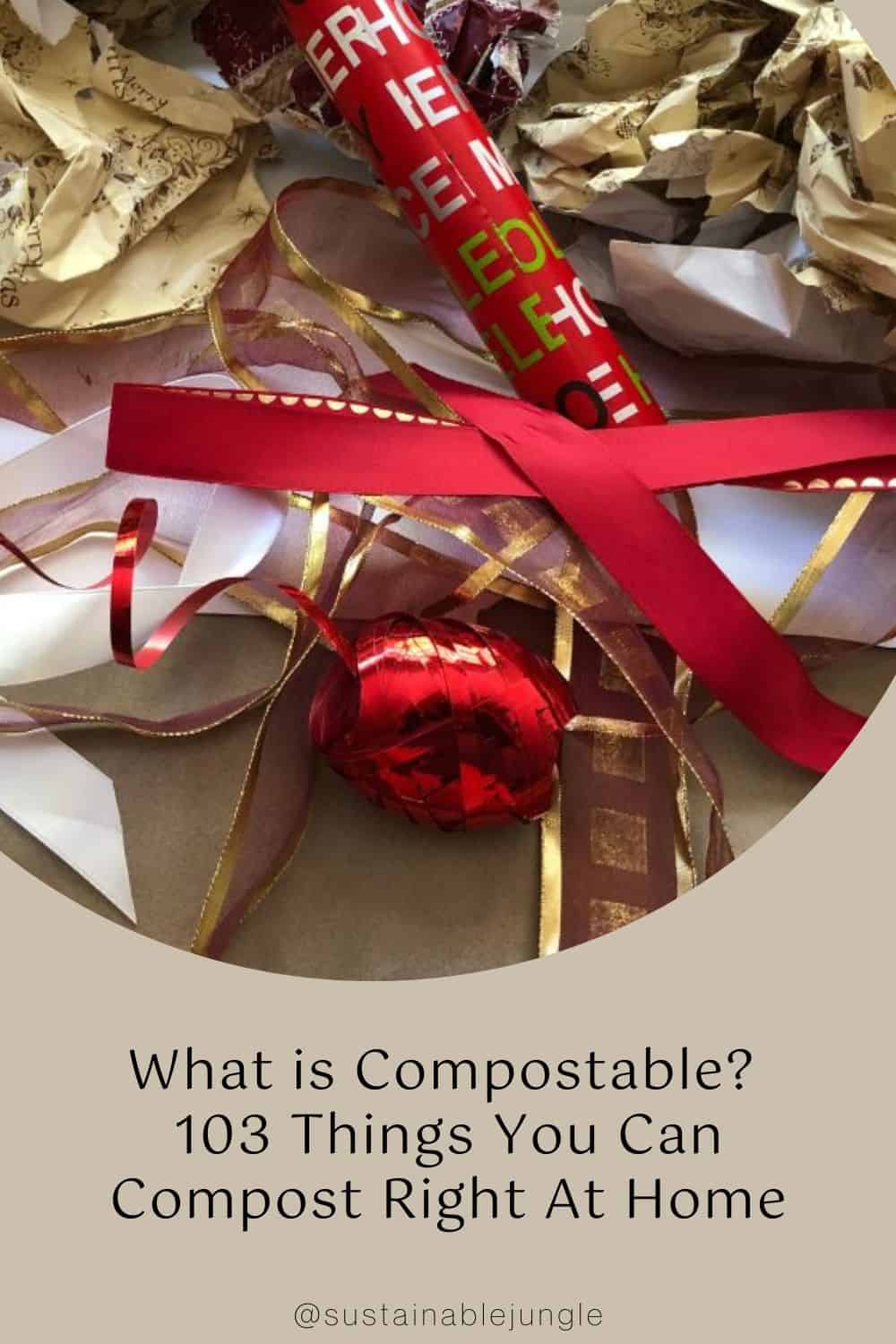

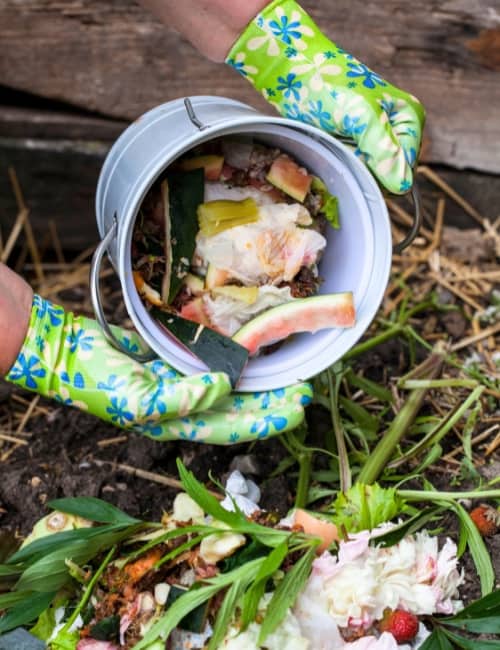
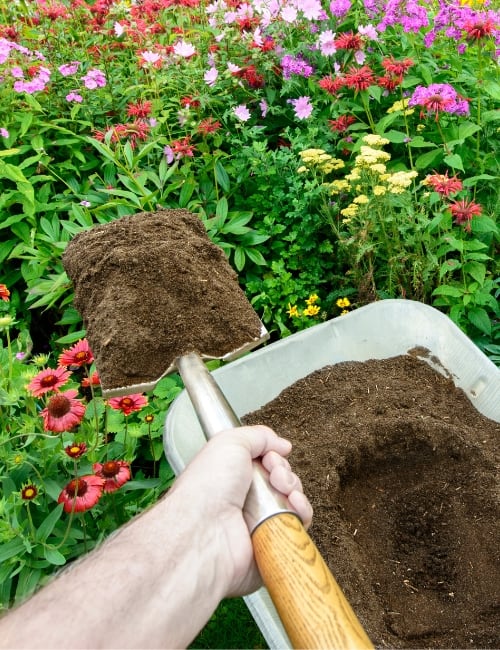

What about cooked leftover restauratnt food? Minus bones. I live in a reitrement community and we have gallons of leftovers daily, in addition to our kitchen veggie and fruit peelings. Ate we better off looking for a hog farmer?
Hey skeeter, are you composting in a home composter? If so, you should probably avoid the cooked food (there is a section on this in the article) but some people seem to make it work. Can you do a small experiment with just a handful of cooked food and see if it could work in your setup? Otherwise if you have access to a hog farmer, that would be ideal. Also check out the ShareWaste App for people in your area who may be looking for your food scraps – https://sharewaste.com/
Did I see somewhere that lint from my clothes dryer can be composted?
So glad I found your website! This is great information.
Thank you!
Jan Lucas
Hi Janice, sadly dryer lint is not compostable. You may have seen reference to this here. Thanks for visiting and for composting!
Hello Joy and Lyle
Very interesting. I have always had a compost heap but never managed it this well!
Will try to do better!
Lots of love to you three!
Grant
Thanks Grant! It certainly is a journey, we’re definately not the best at it!
Thank you for the valuable information. I can’t wait to start! I learned a lot. Infact if I’d started without your info I would have failed miserably! Thanks again for helping me save a little piece of our world.😊✌.
So happy to be helpful to you Mary!